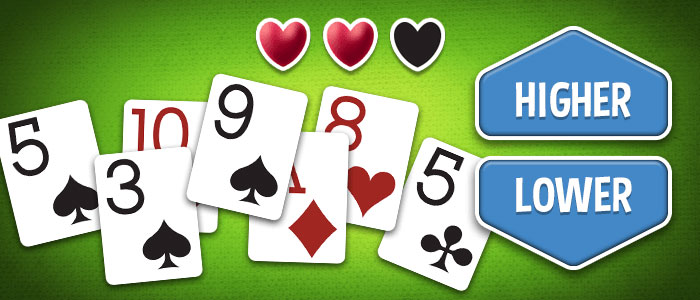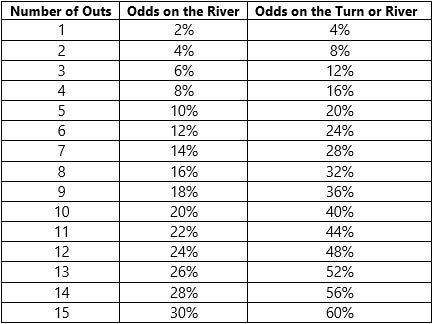Pot Odds Poker Explained
PokerSpoils Newsletter
As daunting as it sounds, it is simply a tool that we use during the decision making process to calculate the Pot Odds in Poker and the chances of us winning the pot. Remember, Poker is not based on pure luck, it is a game of probabilities, there are a certain number of cards in the deck and a certain probability that outcomes will occur. Pot odds are used to determine whether your decision is profitable or not. In fact, most of the poker theory revolves around the basic concept of pot odds. You always have to consider risk and reward and, no matter what, you always make decisions based on poker odds to some degree. Betonline Poker - #1 in the U.S. That’s because the odds of making the flush on the turn are 4/1 – you need both cards to get to your 2/1 shot. If you have to put further money into the pot than the current call, that affects your pot odds and produces implied odds. Often in poker your reward from the pot may be greater in future betting rounds. Calculating your pot odds and equity in a hand in poker are vital in giving you the information you need to make the statistically correct decision. Pot Odds Explained. Once you understand some of the basic odds behind poker you’ll want to take a learn another basic poker math concept: Pot odds. Pot odds are basically a way of deciding whether you should call a bet.
Enter your email address below so I can send you exclusive promotions that I am not allowed to advertise on this website!
Popular Pages
Poker Rooms Reviewed
-PokerStars
-Bovada Poker
-Cake Poker
-Party Poker
-PKR Poker
-Titan Poker

Poker Bonuses

-PokerStars Bonus
-Bovada Poker Bonus
-Cake Poker Bonus
-Party Poker Bonus
-PKR Poker Bonus
Knowing how to calculate pot odds is one of those fundamental poker skills that no poker player should be without. It is a powerful concept because the pot odds can accurately tell you whether or not it’s profitable to call bets in the hopes of hitting a draw.
Pot odds work by comparing the size of the bet and size of the pot to the chances that your draw will hit. Luckily this is an easy concept to learn and before you know it you’ll be calculating the pot odds all the time without even realizing it. In fact, you’ll often use the pot odds when you’re not even in a hand to identify the fish at the table who chase draws against the odds.
There are two ways to calculate your pot odds. One way is extremely simple and easy to use; the other way requires a calculator. The simple method is easier to explain so I guess we’ll use that one today. Besides, I don’t even know how to use a calculator for pot odds. This stuff is all memorization. It’s simple. I have no idea why so many web pages teach the complicated method.
1. Find the Pot Odds
The first step in figuring out whether or not you should call a bet is to compare the size of the bet to the size of the pot using a ratio. If an opponent bets $10 into a $50 pot, your pot odds are 60:10. This reduces down to 6:1. If an opponent bets $50 into a $100 pot, your pot odds are 150:50 or 3:1. Notice that we include the bet when counting the pot size.
That’s the first step. The hardest part is over! Do you see how this works? You just set up the size of the pot next to the size of the bet and reduce it down to simple terms. The next step is even easier.
2. Compare the Pot Odds to the Drawing Odds
What you do here is compare the chances of your draw hitting to the pot odds we figured in the last section. The only thing slightly resembling effort that you have to do here is memorize the odds for a few of the more common drawing hands.
Here’s how it works. Let’s say you have a flush draw and an opponent has bet $10 into a $60 pot. You want to know if you should call or fold. The pot is giving you 7:1 and the odds of a flush draw hitting on the next card are about 4:1. Should you call? Yes. Whenever the pot odds are greater than the drawing odds, it is correct to call. In this example the pot odds are giving you 7:1 on a 4:1 draw. You can call this bet every day and expect to profit over the long term.


Pot Odds Poker Explained Against
What I mean by “profit over the long term” is best explained using an example. Let’s say that over the course of a year you get into the above situation 100 times. 80 times you will miss the flush draw and have to fold for a total of $800 spent chasing and missing.
The other 20 times you complete the flush draw and win the $70 pot for a total of $1,400 in wins. Subtract $800 from $1,400 and you end up with net wins totaling $600. That’s what we mean by looking at the long term.
3. Memorize the Odds for Common Drawing Hands
Pot Odds Poker Explained Odds
The only thing you have to do now is memorize the odds for some of the common drawing hands out there. Some of the most common drawing hands I encounter are flush draws (4:1), straight draws (5:1), 2-pair to full house draws (11:1) and gutshot straight draws (11:1).
There are plenty of poker odds charts out there if you want to look up additional draws. Most odds charts list the odds in two columns: chance on next card and chance on next 2 cards.
Pot Odds Poker Explained Poker
You don’t know if you’ll have to call additional bets on the next street so always base your calculations on only one card coming. The only time you would want to use the “2 cards coming” column is when you’re about to get it all-in on the flop and know for sure that you’ll get to see two cards for this one bet.
Pot Odds Poker Explained Payouts
